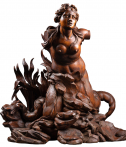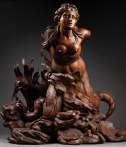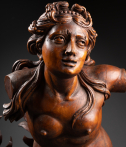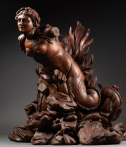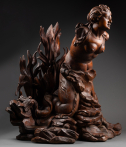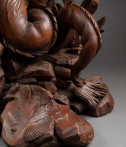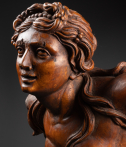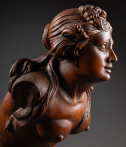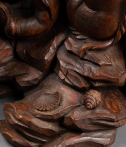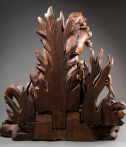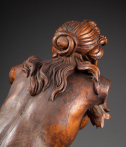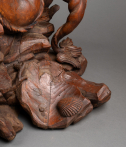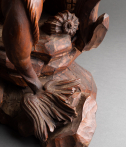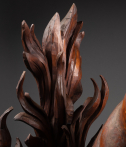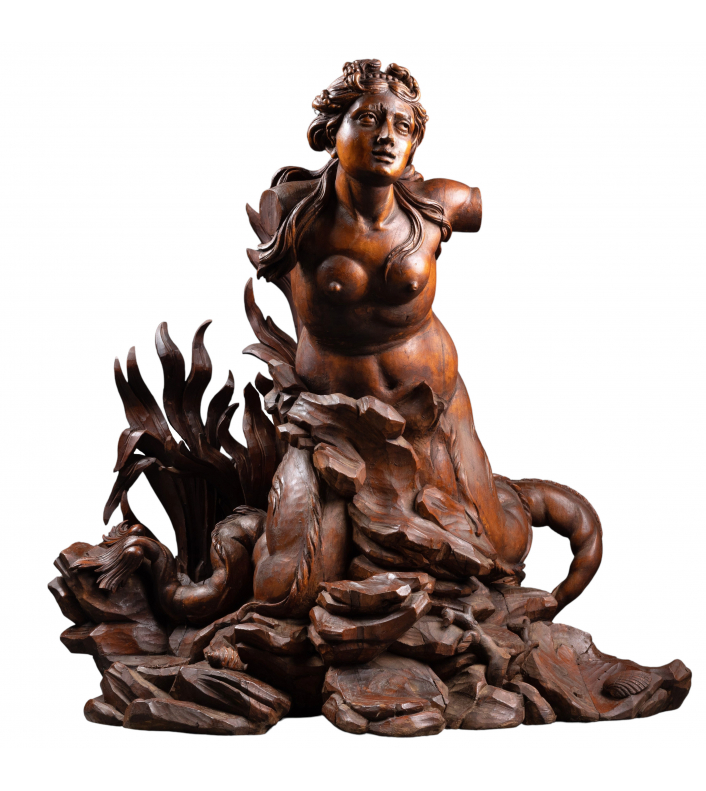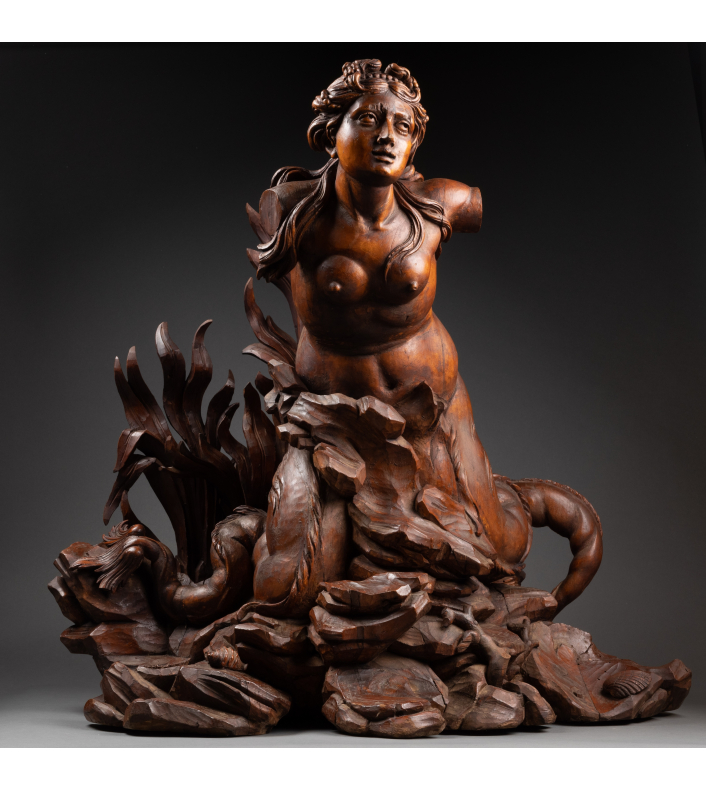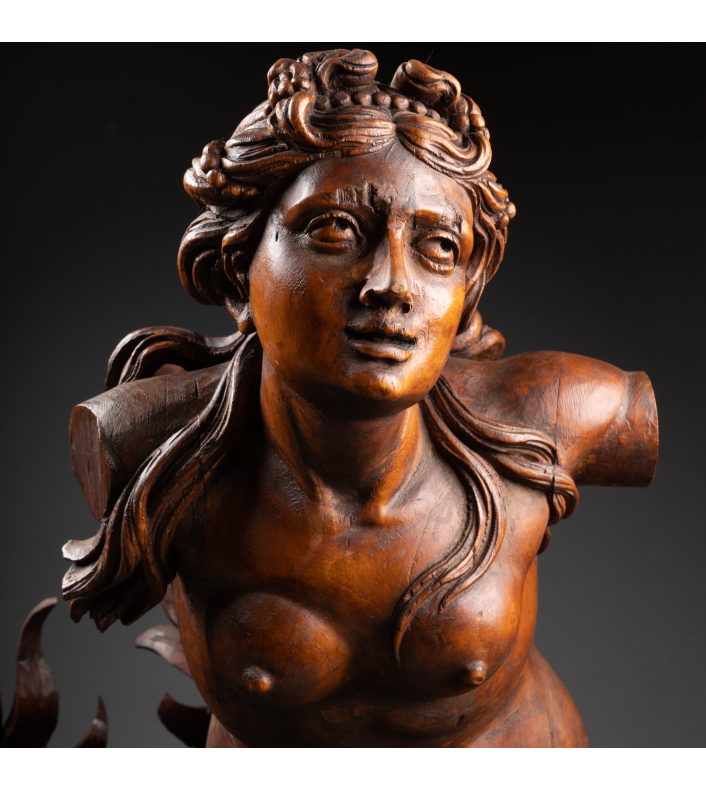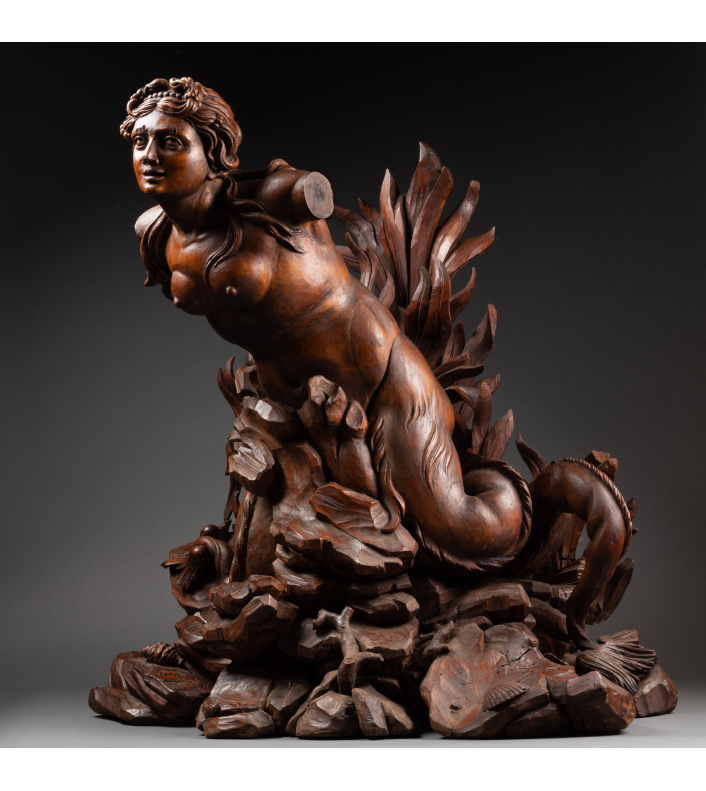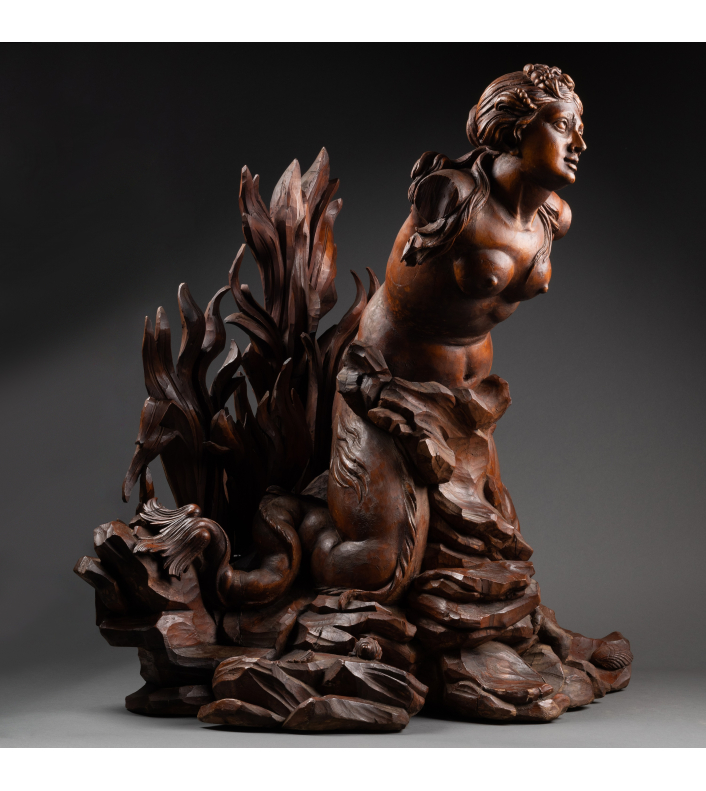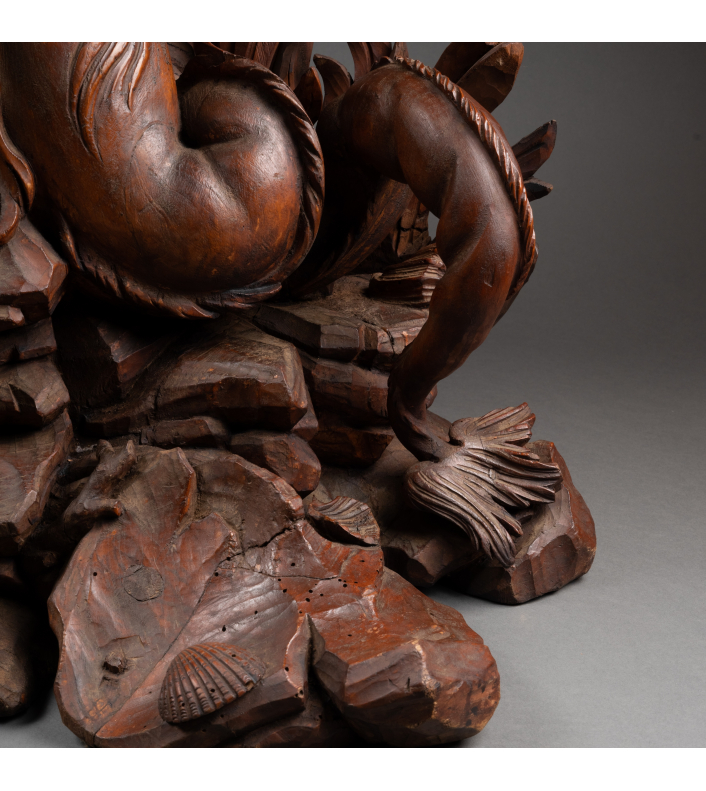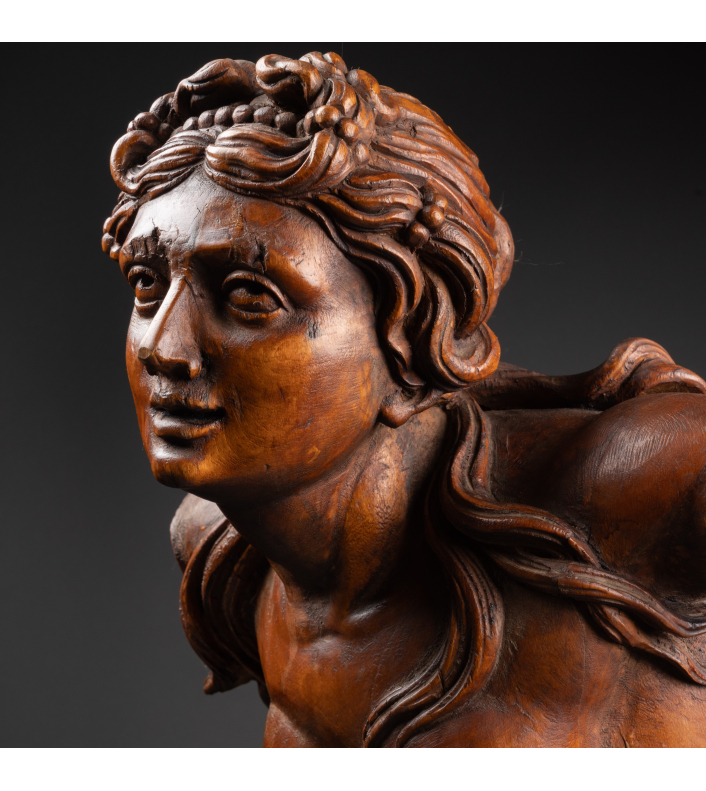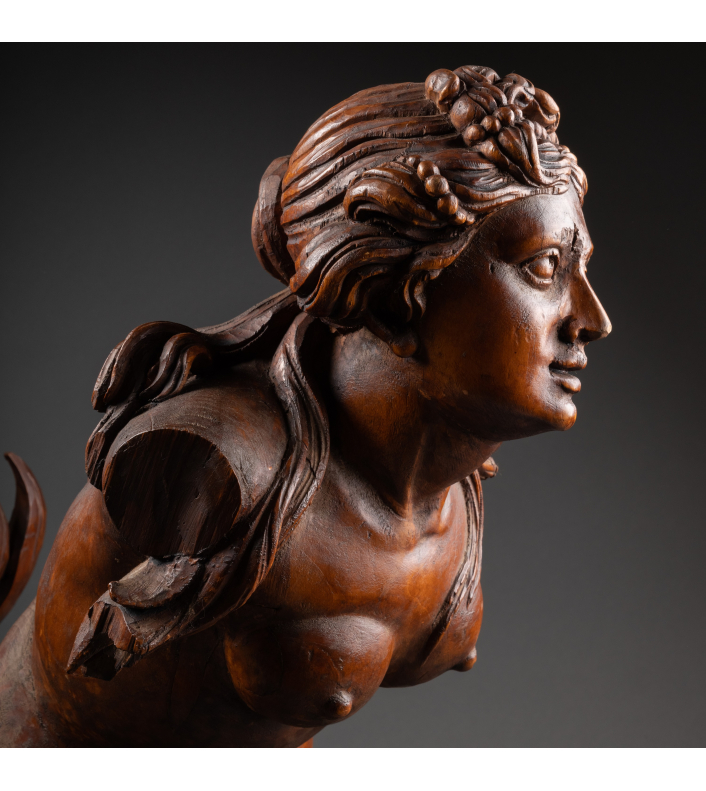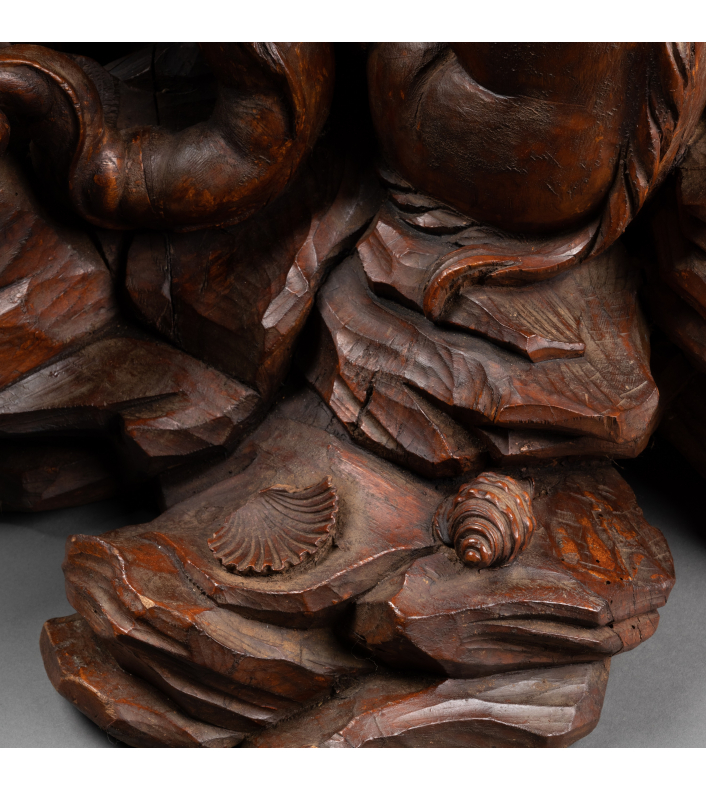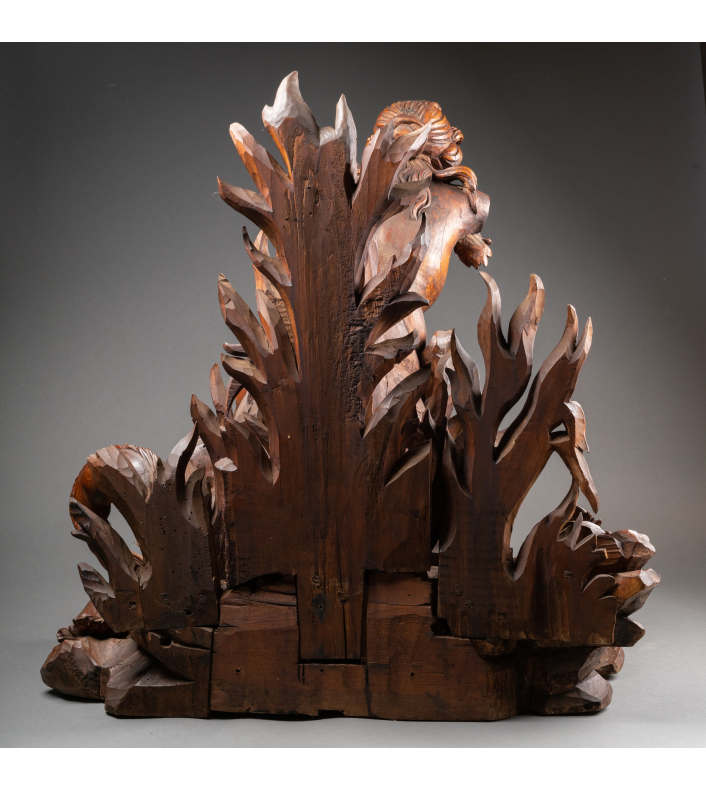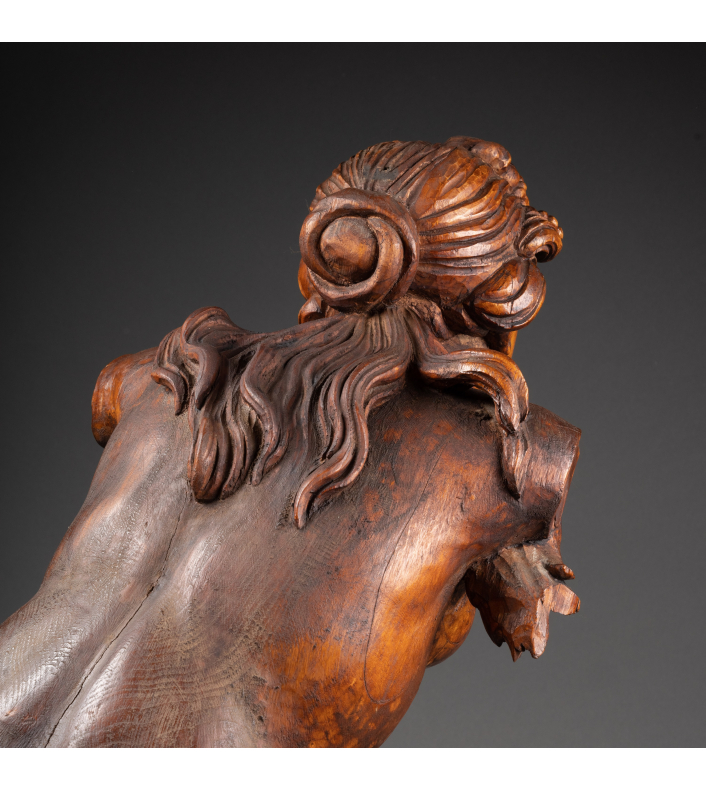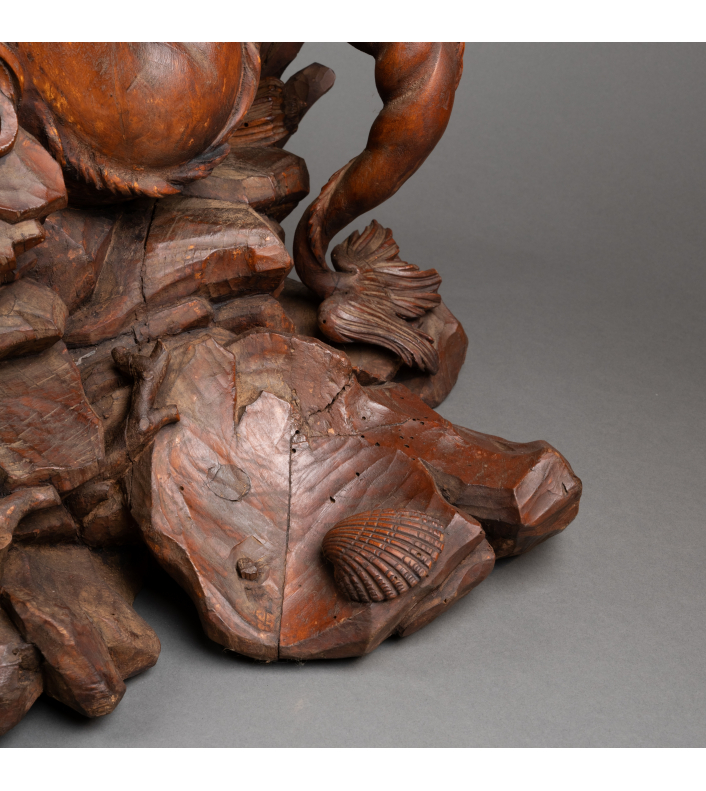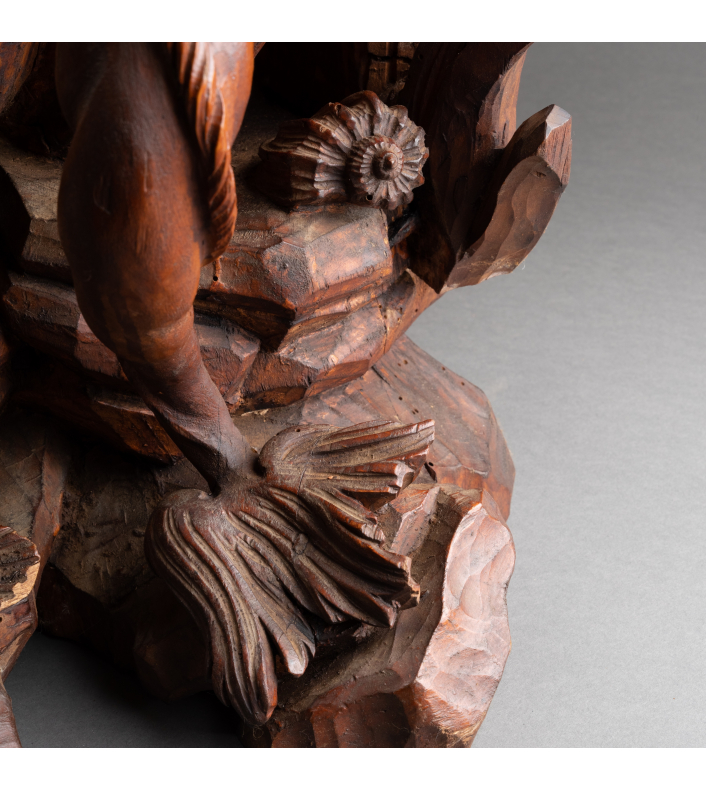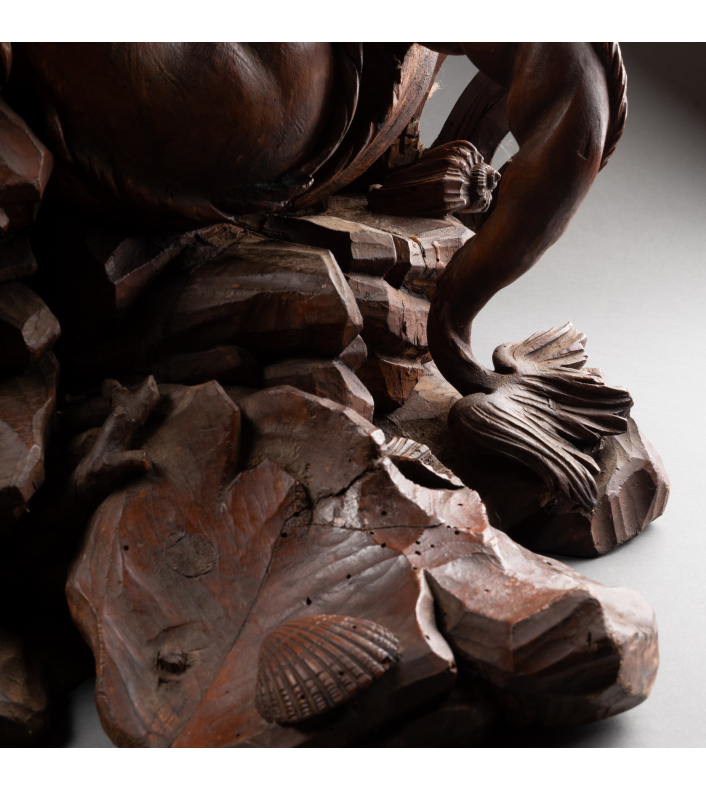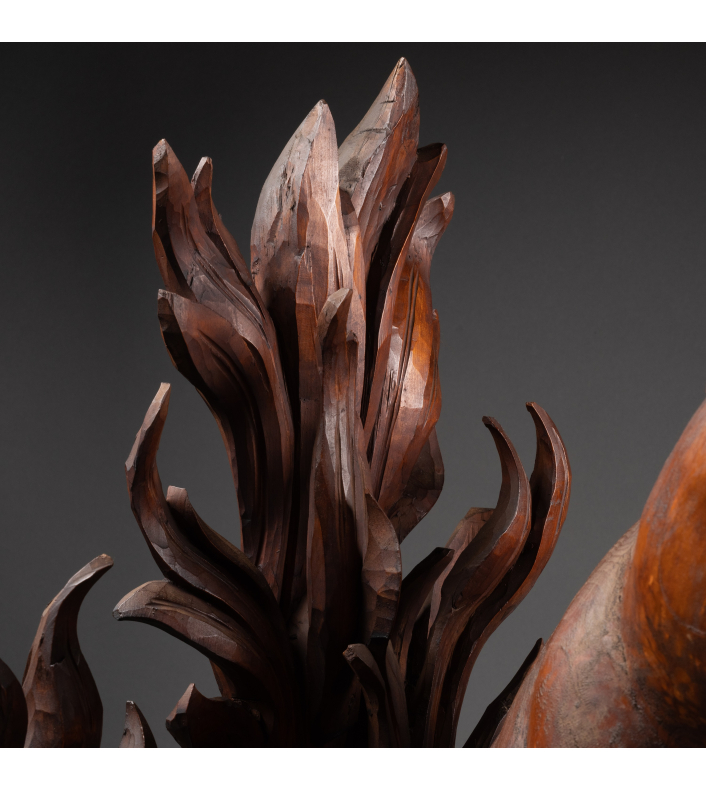A late 17th c. Italian carved figure of Mermaid,
Circle of Filippo Parodi (1630-1702)
Dimensions: h. 29.13 in, w. 30.31 in, d. 18.9 in.(at the base)
Magnificent Italian Baroque sculpture depicting a mermaid seated on the rock.
All the virtuosity of the sculptor unfolds in this carved group. The fantastic creature is featured seated, the upper part of the body darting forward, the head looking upwards. Sophisticated hairstyle with rows of pearls intertwined in her hair, her loose locks fly in the wind and bring movement to the whole sculpture.
The wide-open eyes with hollowed-out pupils make it possible to follow the mermaid's gaze, towards the sky. The half-open mouth further magnifies this bewitching and seductive attitude.
Its long double tail ending in fins wraps on either side of a rocky mound strewn with objects evoking the underwater world: seashells and shells, branches of coral.
The ornamental richness combined with the great care taken in its execution make it a work in which the splendor of Italian Baroque art unfolds in such characteristic scenic movement.
The composition betrays a strong influence from Filippo Parodi, the leader of Genoese Baroque sculpture, and points to an artist from his circle.
Our sculpture was probably part of a decorative monumental palace.
The iconographic theme evoking the marine world finds its application in the numerous fountains and artificial grottos, designed in Italian palaces at the turn of the 17th and 18th centuries.
Giacomo Filippo Parodi (Genoa 1630 – July 22, 1702) was an Italian Baroque sculptor of the Genoese school, who introduced Bernini's aesthetic to Genoa.
In his youth fathers a first apprenticeship with a carpenter, he went to Rome where he became a pupil of Bernini.
He had the opportunity to admire in person the works and style of the French sculptor Pierre Puget, present in Genoa from 1661 to 1668, and to be singularly influenced by him. Thus, and despite an already advanced age, Filippo Parodi gradually moved away from wood carving to work in marble. He therefore established himself as the main sculptor of Baroque Genoa after the departure of the French artist.
He produced many works for the noble families of Genoa, including the statue of Vergine con Angeli in the Church of San Luca. He also hires out his services in Venice and Padua.
There are among his students quite good sculptors including his son-in-law Giacomo Antonio Ponsonelli, Andrea Brustolon, Francesco Biggi, Domenico Garibaldo, Bernardo Schiaffino and especially Angelo de Rossi, who in some of his works manages to equal the master.
His son Domenico (1668-1740), apprentice of Sebastiano Bombelli then of Carlo Maratta and Paolo Gerolamo Piola, was an important painter. He inherited his father's workshop, at that time the largest in Genoa, and developed it with the help of Biggi.


